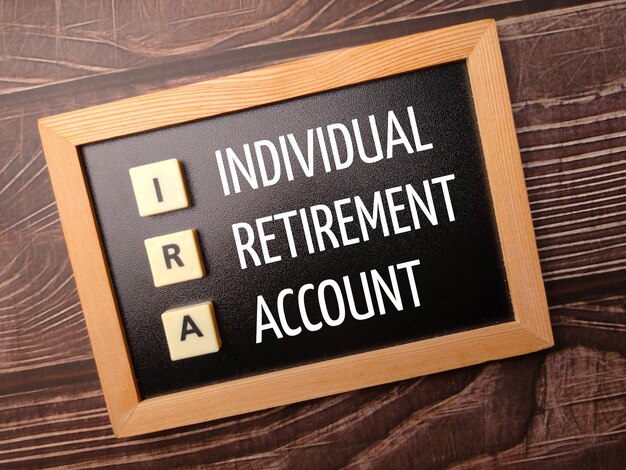Retirement Planning: How to Save $1 Million by 65

Retirement planning involves strategically saving and investing to accumulate $1 million by age 65, ensuring financial security and a comfortable lifestyle during your retirement years.
Planning for retirement can feel overwhelming, but it doesn’t have to be. This The Ultimate Guide to Retirement Planning: How to Save $1 Million by Age 65 provides a clear roadmap to help you reach your financial goals and enjoy a secure future.
Understanding the Importance of Early Retirement Planning
Retirement may seem far off, especially if you’re just starting your career. However, the earlier you begin planning, the greater your chances of achieving financial independence and a comfortable retirement.
Early planning allows you to take advantage of the power of compounding and gives you more time to adjust your strategy as needed.
The Power of Compounding
Compounding is the process of earning returns on your initial investment and then earning returns on those returns. Over time, this can significantly increase your wealth.
Time is Your Greatest Asset
Starting early gives you more time to ride out market fluctuations and make adjustments to your savings plan. The longer you have to save, the less you need to contribute each month.
- Start saving as soon as possible, even if it’s a small amount.
- Take advantage of employer-matching programs for retirement accounts.
- Increase your savings rate gradually over time.

Ultimately, understanding the importance of early retirement planning sets the stage for building a solid financial foundation. By starting early and leveraging the power of compounding, you can pave the way for a secure and fulfilling retirement.
Setting Your Retirement Goals
Before you can start saving, you need to determine how much money you’ll need in retirement. This involves estimating your future expenses and factoring in inflation.
Having clear and realistic goals is a crucial step in retirement planning.
Estimating Your Retirement Expenses
Consider your current lifestyle and how it might change in retirement. Factor in expenses like housing, healthcare, travel, and hobbies.
Calculating Your Retirement Income
Determine how much income you’ll receive from sources like Social Security, pensions, and other investments. Subtract this amount from your estimated expenses to determine your savings gap.
Once you have a clear understanding of your retirement goals, you can develop a savings plan that aligns with your objectives. Remember to adjust your goals as needed to reflect changes in your circumstances.
- Categorize your expenses (essential vs. discretionary).
- Consider inflation and healthcare costs.
- Use online retirement calculators to estimate your needs.
Choosing the Right Retirement Accounts
Selecting the right retirement accounts is essential for maximizing your savings and minimizing taxes. Several options are available, each with its advantages and disadvantages.
The right choices can greatly accelerate your progress toward saving $1 million.
401(k) Plans
A 401(k) is a retirement savings plan sponsored by your employer. Contributions are typically made on a pre-tax basis, and your earnings grow tax-deferred.
Individual Retirement Accounts (IRAs)
An IRA is a retirement savings account that you can open on your own. There are two main types of IRAs: traditional and Roth.
Other Investment Options
Consider other investment options such as taxable brokerage accounts, real estate, and annuities.
- Understand the tax advantages of each account type.
- Consider your risk tolerance and investment time horizon.
- Diversify your investments to minimize risk.

Choosing the right retirement accounts is a critical step in building a secure financial future. By carefully evaluating your options and selecting the accounts that best meet your needs, you can maximize your savings and minimize taxes. Remember to regularly review your investment portfolio and make adjustments as needed to stay on track toward your retirement goals.
Creating a Savings and Investment Strategy
Once you’ve chosen your retirement accounts, it’s time to develop a savings and investment strategy. This involves determining how much to save each month and how to allocate your investments.
A solid strategy is essential for achieving your goal of saving $1 million.
Determining Your Savings Rate
Aim to save at least 15% of your income for retirement. If you’re starting late, you may need to save even more.
Asset Allocation
Diversify your investments across different asset classes, such as stocks, bonds, and cash. Consider your risk tolerance and investment time horizon when making asset allocation decisions.
Creating an effective savings and investment strategy requires careful planning and ongoing monitoring. By setting clear goals, diversifying your investments, and regularly reviewing your portfolio, you can increase your chances of achieving financial security in retirement.
- Automate your savings to ensure consistency.
- Rebalance your portfolio periodically to maintain your desired asset allocation.
- Seek professional advice from a financial advisor if needed.
Managing Debt and Reducing Expenses
High debt and excessive expenses can derail your retirement savings efforts. Managing debt and reducing expenses can free up more money to save for retirement.
Reducing debt and expenses can significantly boost your savings potential.
Prioritizing Debt Repayment
Create a plan to pay off high-interest debt, such as credit card debt. Consider using debt repayment strategies like the snowball or avalanche method.
Reducing Discretionary Expenses
Look for ways to cut back on non-essential expenses, such as dining out, entertainment, and travel. Small changes can add up over time.
Managing debt and reducing expenses are crucial steps in securing your financial future. By prioritizing debt repayment and making conscious choices about your spending habits, you can free up more money to save for retirement and achieve your financial goals.
- Track your spending to identify areas where you can cut back.
- Set a budget and stick to it.
- Negotiate lower interest rates on your debt.
Monitoring and Adjusting Your Plan
Retirement planning is not a one-time event. It’s an ongoing process that requires regular monitoring and adjustments.
Regular reviews help you stay on track toward your financial goals.
Tracking Your Progress
Monitor your investment performance and track your progress toward your retirement goals. Use online tools and calculators to assess your financial health.
Making Adjustments as Needed
Adjust your savings and investment strategy as needed to reflect changes in your circumstances, such as job changes, salary increases, or market fluctuations.
Monitoring and adjusting your plan is crucial for staying on track toward your retirement goals. By regularly reviewing your progress and making adjustments as needed, you can ensure that your savings and investment strategy continue to meet your needs. Remember that it’s always a great choice to seek guidance from a financial professional if you’re unsure about any aspect of your retirement planning.
- Review your plan at least once a year.
- Consult with a financial advisor for personalized advice.
- Stay informed about changes in tax laws and regulations.
| Key Point | Brief Description |
|---|---|
| ⏱️ Start Early | Leverage compounding and allow more time for adjustments. |
| 💰 Choose Accounts Wisely | Optimize savings with 401(k)s and IRAs. |
| 🎯 Set Clear Goals | Estimate expenses and create a targeted savings plan. |
| ✅ Monitor & Adjust | Regularly review and adapt your plan. |
Frequently Asked Questions
▼
Aim to save at least 15% of your income, but this can vary based on your age and current savings. Evaluate your expenses, income sources and savings gap before making a plan.
▼
A Roth IRA uses after-tax dollars, allowing tax-free withdrawals in retirement. A traditional IRA is pre-tax, with taxes paid upon withdrawal during retirement.
▼
Rebalance your portfolio at least annually, or whenever your asset allocation deviates significantly from your target. Market fluctuations impact how you reallocate.
▼
Social Security can provide a portion of your retirement income, but it’s generally not enough to cover all expenses. Factor Social Security into your retirement income calculation.
▼
Consulting a financial advisor can provide personalized guidance and help you make informed decisions about your retirement plan based on your unique circumstances
Conclusion
Saving $1 million by age 65 requires careful planning, consistent savings, and smart investment decisions. By understanding the importance of early planning, setting clear goals, and creating a sound investment strategy, you can increase your chances of achieving financial security in retirement.





